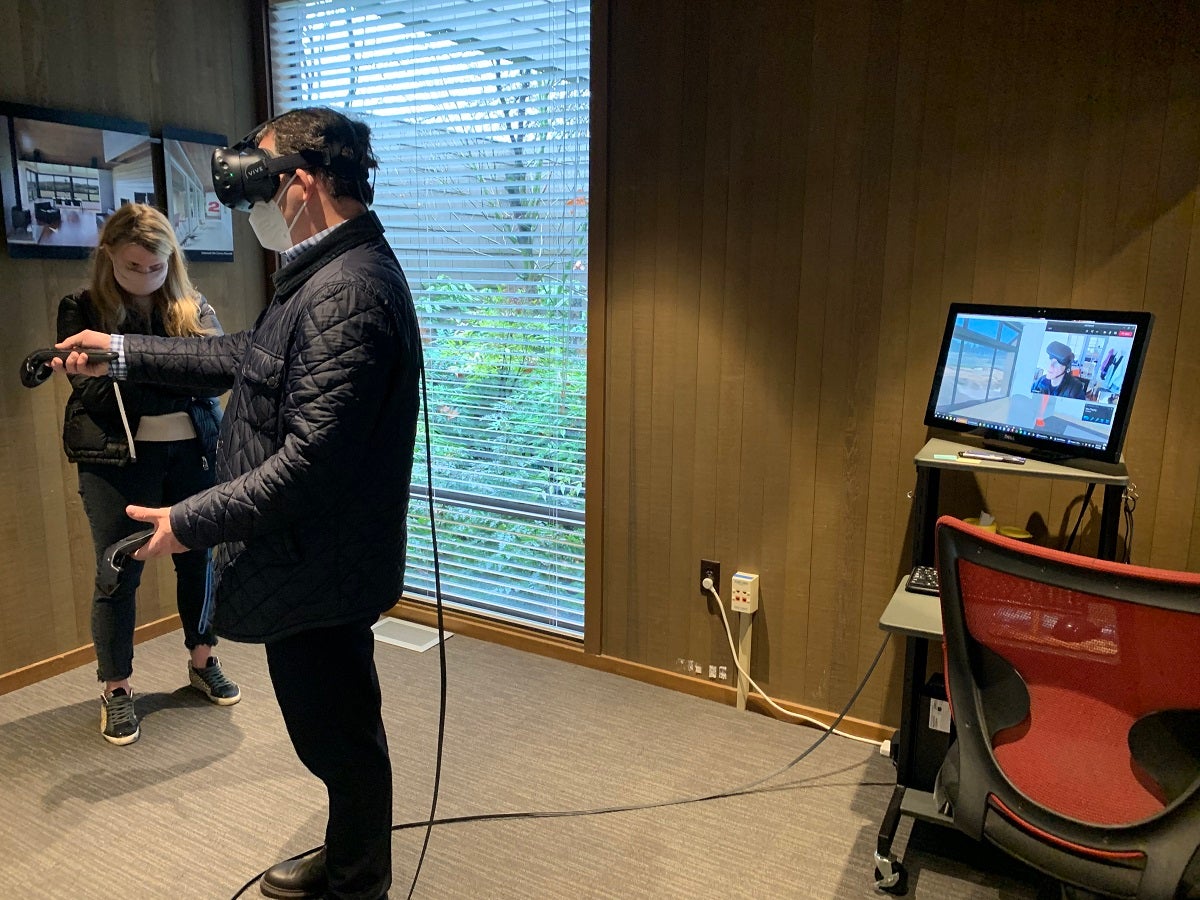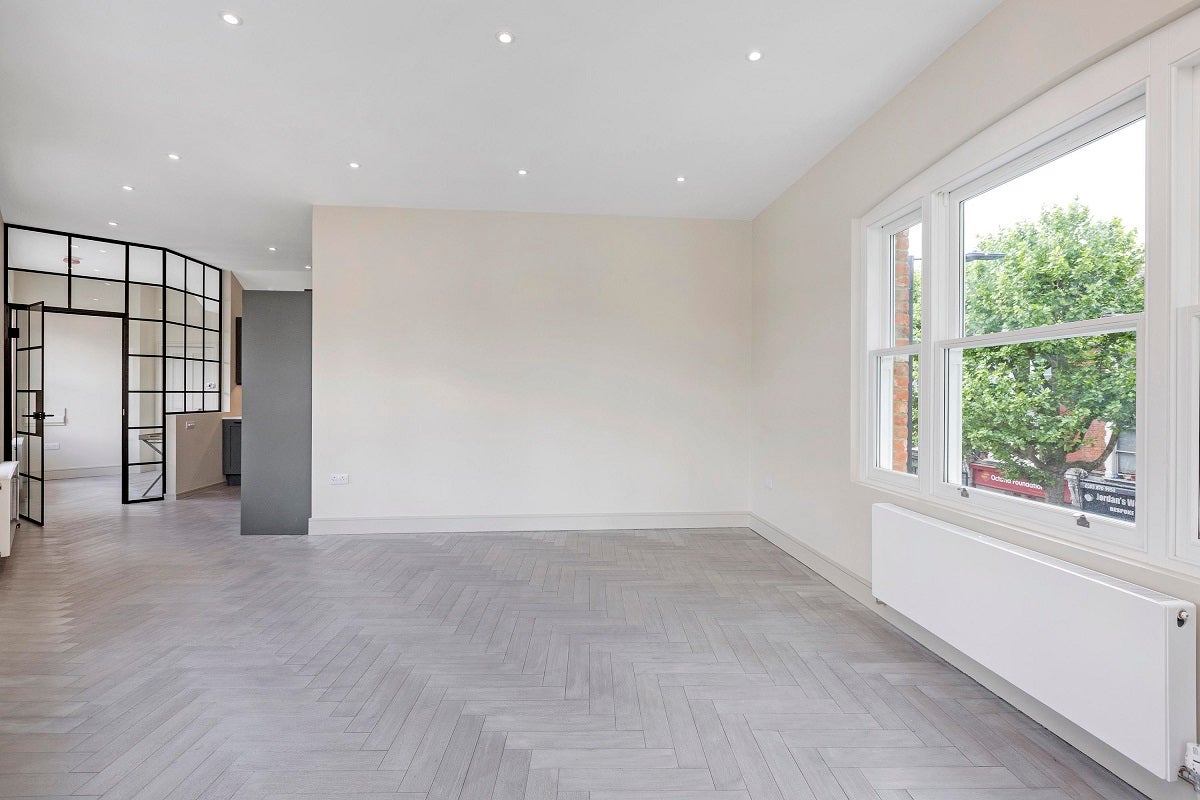
The process of purchasing a house requires a buyer to make numerous viewings, study the floorplans and use their imagination to determine whether the property’s spaces could serve their needs. But virtual reality (VR) is helping buyers to explore potential new homes without stepping outside their doors, offering them interior design simulations and virtual walk-throughs.
The tech is not only useful for estate agents. VR and augmented reality (AR) are becoming powerful tools that construction managers and architects can use to analyse designs and solve problems on larger-scale projects as well.
Property design: helping clients visualise their dream home
Architecture firms are using VR to showcase yet-to-be-built residential properties to prospective buyers, inviting their input before construction begins. This makes home design a more collaborative effort.

“We’ve made sharing this process a cornerstone of our practice and developed many tools to make it accessible,” says John DeForest, founder and principal of DeForest Architects.
Using headsets, hand controllers and IrisVR software, the Seattle-based firm’s architects are able to walk their clients through their virtual designs.
One of the most expensive and unhappy things is a client not understanding what they’re going to get
“Many clients find traditional 2D drawings hard to interpret, so VR offers an intuitive way to evaluate spaces, offering insight on room proportions, lighting and window views,” says DeForest, adding that many of these insights would be tricky to gather even from physical 3D models.
For instance, a VR walk-through of a planned house with views of Mount Rainier allowed clients to envisage how the volcano would look from its windows, giving them greater confidence in the architect’s concept.
Features such as latitude, time and date can be entered into the system, which can demonstrate how natural light would move through a property throughout the day. This has enabled clients to make choices such as whether to install a pool in the garden or not, depending on how much time it would be exposed to the sun.
It’ll be really valuable for sales when VR becomes more realistic. That will create a real emotional impact, which architectural renderings just can’t achieve.
Different design iterations can also be made and flicked through in VR, helping clients to decide how to use a space. For instance, the buyers of a converted barn were shown different functions for it, from a dance hall to children’s bedrooms.
All of this helps to manage people’s expectations, says DeForest, who adds: “It lowers stress levels and reduces the chance of a last-minute scramble. One of the most expensive and unhappy things is a client not understanding what they’re going to get.”
And there’s an environmental benefit: fewer meetings in person are required. “Sometimes we work with clients at great distances,” he says. “So meeting them within a VR property means there’s less flying.”

Construction: using VR to spot problems early
On larger-scale commercial projects, VR can help construction companies to design with precision and avoid costly alterations during the construction phase. Anglian Water’s construction arm, @one Alliance, uses Resolve VR software to build water treatment centres, for instance.
Three-dimensional models are designed and exported into the program. Users don headsets or access the system on their desktops, look around the space and click into individual objects to explore these in more detail. The system also has a ‘fly’ mode, enabling people to move around at height or see through layers of the model.
This ultra-immersive feature means that design experts and novices alike can review models and spot problems such as valves that would be hard for maintenance engineers to access or inefficiencies in the pipework.
Many clients find traditional 2D drawings hard to interpret, so VR offers an intuitive way to evaluate spaces
“The use of VR allows teams to confidently assess the site for issues before it gets built and increases engagement with our existing 3D models, improving the quality of the real-world product,” says Richard Morris, engineering implementation manager at @one Alliance.
He notes that obtaining internet access and sufficient bandwidth to use the system can be difficult at some of the company’s more remote sites. “You need to be able to connect to 4G or Wi-Fi to download 3D models and join meetings. Although the situation is improving, it is frustrating to find that many rural areas of this country still have poor connectivity.”
Construction: using AR to create digital replicas
Coral Butler, group head of digital project delivery at PM Group, uses XYZ Reality’s AR system HoloSite while out on site for big projects. This includes a bespoke hard hat and visor for viewing the AR.
The tech enables her to project her digital model on to a building at any stage of construction so that she can spot any discrepancies and make changes in her design software later. This ensures that she has the most accurate virtual version of that property – a ‘digital twin’ – as the project continues.
Using HoloSite helps to accelerate the construction process, reducing the likelihood of excessive design changes and extra work for the builders. “It saves on a huge amount of building information modelling processing. This eliminates costs and unnecessary resources,” Butler says.
One way the process could be improved is through automation. “If you’re out on site and something is not the same as in your 3D model, you have to raise an issue manually,” she says. “Ideally, that would be automatic, and it would feed back over the cloud to your design software.”
Viewing and selling: virtual tours for buyers and renters
Over the past 18 months there has been a significant increase in the number of estate agents using virtual viewings to let buyers assess their properties while preventing unnecessary journeys during the pandemic.
London-based agency Aspire, for instance, has been using Matterport VR software. Its tours, which are opened via a hyperlink in an email invitation, can be controlled by the agent or the client. They are accompanied by the agent’s narration as they ‘walk through’ a property together. It’s the closest thing someone can get to a real-life viewing, according to Matthew Dabell, Aspire’s MD.

“It can save a lot of time for prospective buyers or tenants,” he says. “I think those who are seeking to move from a distance find it more useful than someone moving locally, where a physical viewing is relatively easy to arrange.”
The virtual tours help buyers to narrow down what features they really need in a property before committing to physical viewings. The facility is a time-saver for staff and has been especially helpful for vulnerable clients. One older person’s house was sold by Aspire last year after 22 virtual viewings followed by only two actual visits.

House dressing is another powerful tool at the agents’ disposal. Various decorative styles can be superimposed on to images of an empty home, giving buyers a better idea of how it could feel with their tastes applied to it. Dabell reports that a “Scandi redressing” helped his firm to sell a house in Fulham for £1.3m earlier this year.
This relatively simple VR system does not require headsets and can be a helpful tool for property buyers, but there is “no replacement for a full physical tour to provide that warm, fuzzy feeling when you find your dream home”, Dabell says. “And it is, of course, still vital to see the finer details of the property and suss out the local area.”
The future of immersive tech in property
DeForest believes that the virtual viewing experience will become ever more lifelike as the technology advances. “It’ll be really valuable for sales when VR becomes more realistic,” he says. “That will create a real emotional impact, which architectural renderings just can’t achieve.”
Butler thinks that automation could streamline the use of AR. She hopes that the technology will become intelligent enough to recognise discrepancies itself, so that users no longer need to flag these up manually.
“This technology is revolutionising construction, making it leaner, protecting our schedules and enabling us to allocate the right resources,” Butler says. “The possibilities are endless.”

The process of purchasing a house requires a buyer to make numerous viewings, study the floorplans and use their imagination to determine whether the property’s spaces could serve their needs. But virtual reality (VR) is helping buyers to explore potential new homes without stepping outside their doors, offering them interior design simulations and virtual walk-throughs.
The tech is not only useful for estate agents. VR and augmented reality (AR) are becoming powerful tools that construction managers and architects can use to analyse designs and solve problems on larger-scale projects as well.
